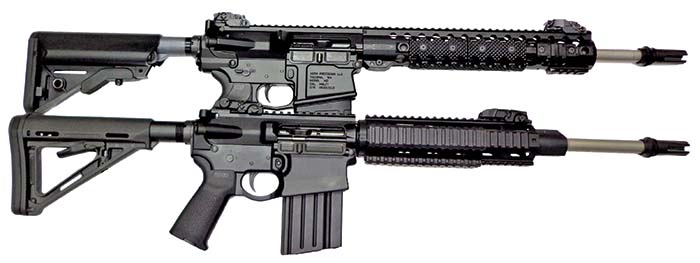When comparing the DPMS Gen 2 to a standard 7.62mm caliber AR-10-type rifle, it is clear to see the reductions in size. Observe the receiver from the rear takedown pin to the rear of the receiver of the AR-10-type (top) to the DPMS Gen 2 (bottom). Both rifles have the same length barrel and flash suppressor.
By Christopher R. Bartocci
The name DPMS (Defense Procurement Manufacturing Service) is an icon in the industry for both AR-15 and AR-10-type rifles and accessories. Opening their doors in 1986, the company, founded by Randy Luth, entered the industry at a pivotal point in the history of the Black Rifle. At that time, Colt pretty much had a monopoly on the AR market. Bushmaster had begun manufacturing components and some rifles, and Sendra, PWA (early LMT venture) were most common in those early days. Then in January 1989 Patrick Purdy shot up a school yard with a Chinese AK in Stockton, California. The first “Assault Weapon” ban hit and the industry had its first major surge in production demand for the so-called assault rifles. In 1994, President Clinton enacted the first national Assault Weapons Ban. In 1993 to 1994, DPMS ramped up production and began selling complete rifles. With the enactment of the law, they went into production of compliant rifles for commercial sale. In these intervening years DPMS had great expansion. Not only in the complete rifle and component markets in the commercial market but they began numerous contracts for the U.S. government for M16-type and M1911 components. This gave the company experience in what exactly Mil-Spec production and quality was and they brought much of that into their regular production. In 1994, the Federal Assault Weapon ban sunset and the industry was permitted to go back to normal production. From 2004 to current there have been numerous assault weapon ban scares both on the federal and state level. The firearms industry has seen its highest surge of sales in the history of the so-called assault weapon demand and sales. From 2004 to 2007, DPMS doubled their revenue increasing their staff from 30 to 65 people. The Minneapolis-St. Paul Business Journal claimed DPMS was in the “50 fastest growing privately held companies.” On December 14, 2007, DPMS was purchased by Freedom Group, which is a consortium of firearms manufacturers and part of Cerberus Capital Management, which is a New York private equity investment firm.
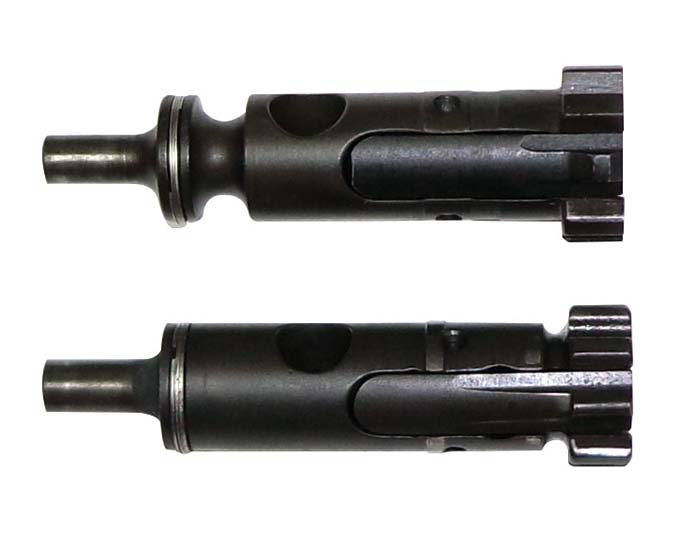
In 2000, DPMS introduced their 7.62x51mm/.308 Winchester caliber rifle to market, the Gen 1 LR-308 family of weapons. This included the standard LR-308, AP4 Carbine, LR-308B and LR-308T. This actually became the second of two standards of receiver configurations for the industry as well. The first is the KAC SR-25/Armalite AR-10 receiver, which is more of a squared off rear of the upper and lower receiver. The KAC SR-25 receiver configuration has been adopted by numerous companies including LWRCI, Lewis Machine and Tool, Mega Arms MATEN, La Rue Tactical Rifle, Legion Firearms, Cross Machine & Tool, Sturm Ruger and Heckler & Koch. DPMS uses a rounded rear receiver and lower and that configuration of receivers has been adopted by Aero Precision, Smith & Wesson M&P, Rock River, Colt and SIG to name a few.
The LR-308 is a basic target rifle. The rifle uses SR-25 or AR-10 magazines and has a 24 inch 1 turn in 10 bull barrel and free floating handguard. The upper receiver is also a little unique in that the rails sit up higher than any of the other AR-10-type rifles. This has been adopted in the Aero Precision M5 upper receiver as well. The upper receiver is manufactured from an extrusion of 7075 T6 aircraft grade aluminum. The front sight base also has Mil-Std 1913 rail for the attachment of a removable front sight. The lower receiver is manufactured from a billet of 7075 T6 aircraft grade aluminum. The stock is the standard M16A2-type fixed stock. There is no muzzle device, forward assist nor ejection port cover. The weight of the LR-308 is 11.25 pounds and the MSRP is $1,199.
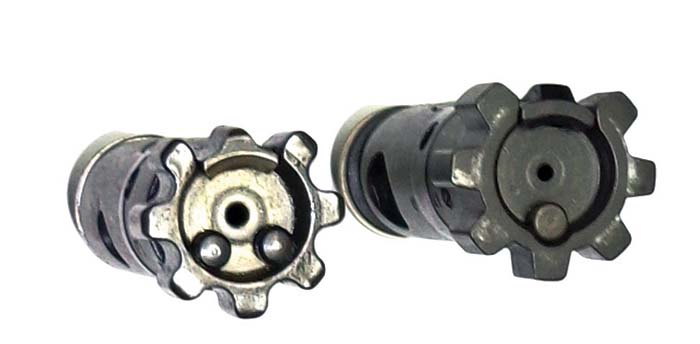
The AP4 is more of a 7.62x51mm /.308 Win. copy of the M4. The upper receiver is manufactured from the same 7075 T6 aircraft grade aluminum extrusion (DPMS A3 configuration). The front sight base is a standard drilled and pinned-on front sight tower that is identical to that of the M4 and M16A4 rifle. The upper has a forward assist built into the fired cartridge case deflector and an ejection port cover. The barrel is 16 inches and manufactured from 4140 chromemoly steel and has a 1 turn in 10 inch right hand twist. The muzzle has a DPMS Panther designed flash suppressor. The lower receiver is manufactured from billet of 7075 T6 aluminum. The sliding stock is on a commercial receiver extension. The overall weight is 8.5 pounds. The rifle comes with a detachable carrying handle with an A2 fully adjustable rear sight. The MSRP of the AP4 is $1,269.
The LR-308B is an 18 inch barreled version of the LR-308. It is designed to be shorter and more compact for hunting and target shooting. All of the specifications are the same as the LR-308B with the only change is the shorter 18 inch barrel. The weight is 9.75 pounds (two pounds lighter than the LR-308) with an MSRP of $1,189.
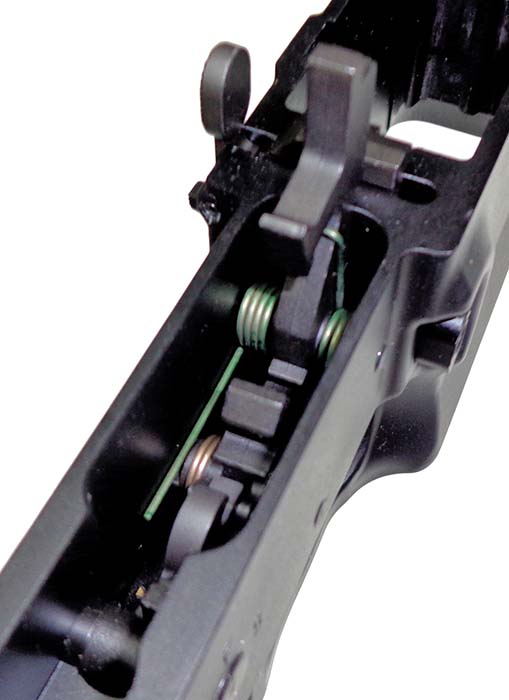
The LR-308T is the Tactical version of the rifle. The main difference between the T and the B is that the T has a 16 inch heavy barrel. The rifle weighs the same 9.75 pounds but with the shorter heavy barrel. The MSRP is $1,189.
Due to the chambering of the .308 Win., DPMS was also able to offer these rifles in different calibers to increase the versatility of the weapons platform. This included rifles chambered in .243 Winchester, .260 Remington and .338 Federal. The upper receiver can be switched up from a simple slabslide to decrease weight or have one with a forward assist, ejection port dust cover and cartridge case deflector. Additionally, DPMS offers many different options in handguards ranging from standard polymer to free floated quad rails.
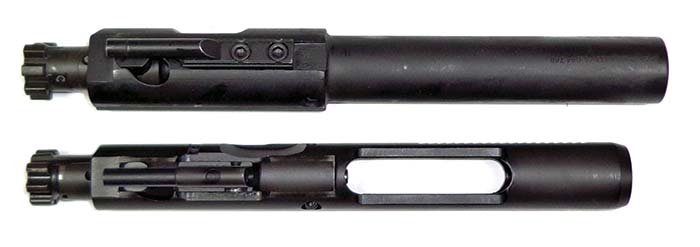
DPMS engineers set out in late 2010 to come up with ways they could improve upon the standard design. They understood that if the LR-308 was to fail it would be during extraction, ejection and feeding. The set goals were to improve upon these issues with design development beginning in early 2011. The new rifle was unveiled at SHOT Show 2014 in Las Vegas with the Gen II rifle.
This is not lipstick and rouge on their LR-308 family of weapons; but a completely new system with very few common parts between the Gen I and the Gen II – mostly just from the trigger group and stock assembly. The Gen II is in fact a far departure from anyone in the industry. Basically, all the updates seen over these past years to the AR-10 platform have been with new rails, stocks, trigger and bolt enhancements. But all are built on the same basic upper and lower receiver. Most of the bolt and bolt carriers are completely interchangeable as well throughout the industry. The Gen II uses completely different upper, lower, bolt, bolt carrier, barrel extension, barrel nut and charging handle.
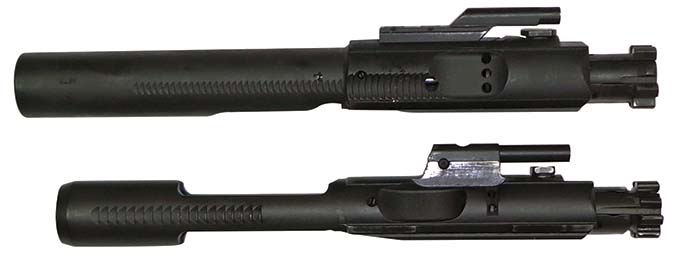
Beginning with the lower receiver, it is fundamentally a standard 5.56mm receiver from the magazine-well back. For all intents and purposes a 5.56mm lower with a wider and longer magazine well to accommodate the larger 7.62x51mm magazine. The lower receiver is manufactured from a 7075 T6 aircraft grade forging. There is no extra material and the receiver is as slim lined as possible. The magazine release does have a protective BOSS around it to prevent unintentional release of the magazine. There is just enough material to accommodate the spring and detent for the front pivot pin. The trigger guard is integral with the forging and built quite strong. It is oversized and will accept a gloved trigger finger. The pistol grip chosen for the rifle is the very comfortable Magpul MOE pistol grip. The receiver is marked S and F on the right side to let the left handed shooter know the condition of his/her weapon. The selector is stock. The bolt catch is the standard DPMS .308 Win. bolt catch that is severely beefed up to halt the heavy .308 Win./7.62mm bolt carrier group. The trigger assembly is a two stage match grade trigger. For the most part the lower receiver will accept ambidextrous selector levers and magazine button enhancements offered in the industry. The trigger group is standard so any of the match grade or other type trigger systems can be installed. The receiver extension is a standard commercial diameter commercial receiver extension tube, which has six positions of locking for the Magpul MOE stock. This stock is extremely comfortable and the locking latch is easier to manipulate than most stocks on the market. The stock does have a removable rubber butt pad. The buffer is a shorter buffer that allows the use of the shorter stock that does keep some compatibility with the 5.56mm rifle. The hammer/trigger pins have been improved as well with DPMS choosing a much stronger material to manufacture them from. The cosmetic look of the lower receiver is excellent without a single blemish.

The bolt carrier and upper receiver is where the real changes are noted and the heart of the G II. The upper receiver is manufactured from a 7075 T6 aircraft grade aluminum forging. The first thing noticed is that the upper receiver is much shorter than the standard AR-10-type upper receiver. Also noticed was the rails are on the same center plane as the 5.56mm rifle than that of the standard .308 Win./7.62x51mm rifle. The ejection port is also larger than standard as well in both width and length. This was designed to improve affects of ejection of the fired cartridge case. The fired cartridge case deflector has also been altered/improved. There is a guide/shape of a .308 Winchester/7.62x51mm cartridge case. There is a forward bolt assist on the rear of the right side of the upper receiver as well.

Due to the shorter upper receiver, a special charging handle had to be designed for the Gen II rifle. It has the same latch assembly but the charging handle is proprietary. The charging handle will accept any of the tactical latches offered in the industry.
The barrel extension is of great interest. The feed ramps are not on the barrel extension but on a steel plate that is pinned into the upper receiver. Why would DPMS do this? DPMS engineers found that a significant amount of failures to feed with hunting ammunition (soft point, flat nose) is a result of the way the projectile nose strikes the feed ramps of the barrel extension. This also made it possible to use the smaller barrel extension required to allow attachment to the smaller upper receiver. The cartridge maintains contact with steel at all time. As a result of this change the Gen II experience an increase in reliability with a much wider range of commercial hunting ammunition due to the steel feed ramp insert.
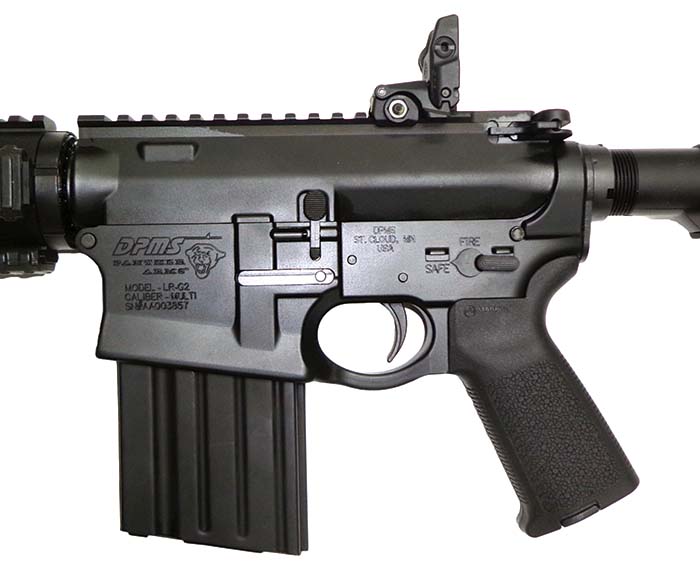
The barrel provided on the Gen II Recon is a 16 inch stainless steel bead blasted barrel with a 1 turn in 10 inch twist. Attached to the barrel is a DPMS hunter gas block that is held on by two set screws. The rifle uses a mid-length gas system. There are several different models of the Gen II available in 6 different configurations. This ranges from light barrels and fluted barrels with various lengths. Attached to the Recon muzzle is an Advanced Armament 51T Blackout Silencer Adapter. The barrel nut is a very important upgrade as well. Due to the fact the gas tube location is the same as the M16/M4, most AR-15 type 2-piece rails will fit on the rifle. Many of the free floating rails will as well. The only need is a modified barrel nut that will accept the thread size of the Gen II receiver. Several companies are doing this now such as Samson and Midwest Industries. More companies are in the works of making the proper barrel nut for the Gen II rifle.
The Gen II models include the Gen II AP4. There are two different models, the standard and the MOE. Both have a 16 inch chrome lined lightweight barrel profile. The standard has standard round handguards and M4 type stock with an MSRP of $1,499. The Gen II AP4 MOE has a MOE pistol grip, handguard and stock with a MSRP of $1,599.
The Gen II Recon is the subject of this article, which was the test and evaluation rifle provided by DPMS. The Gen II SASS (Semi Automatic Sniper System) is provided with a Magpul PRS stock, Harris Bipod, Magpul Gen II MBUS polymer back up sights, 4 rail free float tubular handguard, Panther Tactical Grip and an 18 inch fluted stainless steel barrel and Panther flash hider. This is a 10.5 pound rifle. The MSRP is $2,379 for the Gen II SASS. The Gen II Hunter is designed for hunting and is light weight. The rifle is equipped with a 20 inch target crown lightweight stainless steel barrel with no muzzle device. It has a Magpul MOE fixed rifle stock and a Hogue pistol grip. The handguard is a DPMS Carbon Fiber Free Float Tube. The rifle weighs 7.76 pounds with an MSRP of $1,699. The Gen II BULL is lighter and stronger but is as accurate as the original. The BULL weight 20% less than the original LR-308 at 10 pounds versus the original at 11.25 pounds. The rifle has a 24 inch stainless steel bull barrel and uses the standard length free float tube and has an A2 pistol grip and standard GI A2 buttstock. The MSRP of this rifle is $1,759. Much of the difference in the models revolves around barrel length and configuration.

The bolt and bolt carrier are other major reliability enhancements to the weapon system. The bolt carrier group does most of the work in function of the rifle and is responsible for extraction, ejection, being the piston/expansion chamber for the design. DPMS engineers felt there was room for improvement.
The bolt carrier is the same diameter as that of the 5.56mm rifle. It is also shorter than the standard AR-10-type bolt carrier. Looking at the bottom of the carrier and design, this rifle will be readily made into a selective fire rifle. The fire control group and the sear trip on the bolt carrier and will line up just fine with an automatic sear. The Gen II, as of this writing, is primarily just a commercial rifle. As time goes on the rifle very well may take its place in the ranks of law enforcement in this country and possibly in the foreign military market. If DPMS is requested to provide a selective fire rifle, they will be able to quite easily. The bolt carrier is monolithic as well. What that means is the carrier key is part of the bolt carrier. The actual key that interfaces with the gas tube is inserted in and pinned in place. What this does is eliminate gas leakage from the carrier/key. There are no carrier key screws to break or come loose which permits gas loss. This could certainly be a major design enhancement for any direct gas bolt carrier. There are two gas exhaust ports on the right side. The design of the bolt carrier made it possible to both decrease the length and width of the upper and lower receiver.
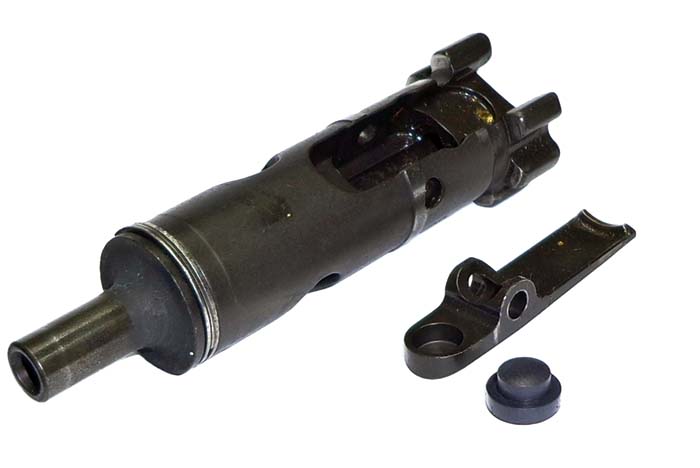
The bolt is also very unique and proprietary to this rifle. The overall diameter of the bolt on the lugs is smaller permitting the use of a smaller barrel extension and the decrease in the diameter of the rear of the bolt allowed for the use of the 5.56mm diameter bolt carrier. The geometry is quite different from that of the standard AR-10; you do not have the material removed in front of the gas rings. The bolt also has two ejectors. This is found on many of the .308 Winchester/7.62x51mm rifles in the industry including Lewis Machine and Tool, Heckler & Koch and Faxon Arms. In the case of Lewis Machine and Tool and H&K, it was necessary for use with short barreled rifles that had a higher cyclic rate. Sometimes the bolt velocity is so fast that a single ejector is not enough to reliably throw the fired cartridge case out of the ejection port. The second ejector ensures this extraction reliability. This is not really necessary in 16 inch and longer barrels though it is still a reliability enhancement on the longer barrels – insurance if you will. On the Gen II, the second ejector was added to spread the load out between the extractor and two ejectors making for easier extraction and ejection. Also, DPMS felt that if one extractor was to break, or the spring gets weak or seizes up, the second ejector would keep the gun functioning until it can get repaired. It also stabilizes the ejection pattern of the rifle, ejecting farther and landing in a nice pile. Great if you save your brass. Any way you would look at this, it is most certainly an improvement.
The extractor itself is quite noteworthy as well. As of this writing the extractor improvements are in the process of being patented with the U.S. Patent office. Endurance testing had shown DPMS that the extractor is under a lot of stress in a .308 Win. It was one of the parts that was much more prone to break than any other. Extractor wear has much to do with the gas system and dwell time as the shorter your gas system the faster the unlocking time. If the extraction process happens “too soon” the cartridge case is still obturated meaning it has not yet fully contracted and released from the walls of the chamber to result in easy extraction. If the residual pressure is still high, the extractor and extractor spring have to work that much harder to pull the cartridge case from the chamber. This often results in the claw on the extractor being sheared off completely or having some degree of structural failure. Many times, due to the short amount of space in the bolt for the extractor spring, you are limited as to how long and how strong the extractor spring can be. When the springs reach the end of their life, the springs get weak causing failure to extract and also the springs can break also causing failure to extract. Back around the 2003/2004 time period SOCOM experienced many issues with extraction with their M4 carbines. They found a very cheap and novel approach to fix the problem: the addition of a rubber o-ring to the extractor spring that increased the extraction force by a factor of 4. They even found the rifle worked just as reliably, if not more, without the spring in there at all using this rubber o-ring. The DPMS engineers obviously did their homework on these issues and some ways others corrected them and how they could do even better. They redesigned the extractor completely. To deal with the breakage of the extractor claw, they chose a new stronger material to manufacture the extractor made of a proprietary material and is significantly stronger than the standard extractor making its service life under stress that much better. They also made some geometric changes as well to improve where the pressure loads are on the ejector. The broken spring problem was solved by eliminating the spring all together. Taking the concept of the rubber o-ring, DPMS designed what they call the elastomer extractor spring. It is an all rubber insert replacing the extractor spring and buffer. This design has been proven with more than 30,000 rounds of testing as well as qualified in extreme hot and cold temperatures. The specific material they use is also proprietary but this is a viable and much better solution than trying to improve a spring that you are limited as to what you can do from the size of the spring compartment.

The test and evaluation rifle sent was brand new and examination of the fit and finish was phenomenal. No play in the receiver and not a single cosmetic blemish. The rifle was provided with Magpul polymer folding front and rear sights and DPMS steel 20-round magazine. The author added three Manta rail covers to the handguard to make the handguard easy to hold – not because of heat but because the rails themselves. The Manta rail covers are the finest available in protecting the shooter’s hand from not only heat but cold as well.
The rifle was tested for compatibility with several magazines. These included the DPMS steel magazine it came with, Knight’s Armament SR-25 steel magazine, the Ammunition Storage Components 20-round magazine, the Magpul PMag 20 LR polymer 20-round magazine and the newly released Magpul PMag 25 LR 25-round magazine. Too, just when the rifle was taken out the final time, the brand new Lancer L7 translucent 20-round magazines arrived so that was added to the mix as well. There were more than 500 rounds fired though the test and evaluation with all of these magazines. There were no malfunctions of any sort – the rifle fired all of them reliably. The ammunition included 400 rounds of Winchester USA 7.62x51mm NATO 147gr full metal jacket. The other hundred was a combination of Black Hills Ammunition 7.62x51mm 175gr OTM (M118LR), Hornady TAP .308 Winchester 165gr Interbond TAP Barrier and Remington 168gr OTM. The optic chosen for the rifle was the Leupold Mark 4 LR/T 3.5-10x40mm, M3 Ill Reticle, TMR Scope with A.R.M.S., Inc. throw lever mounts and rings. The Black Hills Ammunition and the Hornady TAP ammunition shot very close but the Black Hills ammunition shot the best group of the day with a 1.22 inches. The SWAT sniper who shot this 100 yard group felt the rifle could shoot better with a better optic and he could have done better if he had a scope with a finer crosshair.
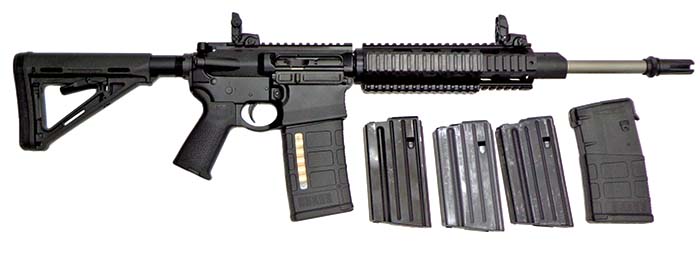
The overall impression of the DPMS Gen II is it’s a real winner. This is truly an out of the box thinking design that departs from the rest of the industry. It is shorter, lighter and thinner than any other rifle out there in its class. Everyone who shot it had one comment in common; there was a sharper recoil due to it being lighter than the other .308 Win. rifle we had out there that day. That is the same if you compare a early 1960s AI AR-10 to a current Armalite AR-10A2. You would see the heavier recoil of the AI – just a sacrifice you make for the lighter rifle. There were only two further improvements this author would like to see in the Gen II. First is that the gas block be drilled and pinned into place. Second is an ambidextrous magazine and bolt catch. It would not be surprising to maybe see this in future evolutions of the Gen II rifle. There are clearly many situations this rifle would shine in both commercial and law enforcement markets. The light weight and more compact aspect of the rifle would greatly be appreciated by hunters as well as competition shooters. Law enforcement would like it for the same reasons. The Recon rifle sent as a test and evaluation unit definitely has the promise to shoot well enough for a sniper or containment rifle.
| This article first appeared in Small Arms Review V19N6 (July 2015) |



